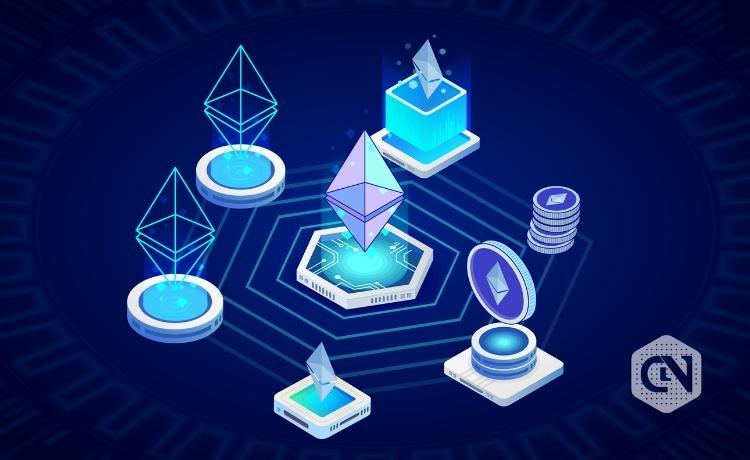Because the cryptocurrency panorama has continued to evolve, Ethereum now stands at a pivotal crossroads, which stands to form its future in a giant approach. Whereas ETH’s worth and market cap fell by 10% between July and September, the asset nonetheless outperformed Bitcoin by 2%.
Furthermore, as per Messari’s State of Ethereum in Q3 2023 report, Layer-2 (L2) transactions accounted for 2 occasions as many transactions on the mainnet, i.e., practically 66% of all transactions throughout the ecosystem. This shift in direction of L2 options has spurred a number of conversations relating to Ethereum’s scalability, safety, and its dedication to decentralization.
The continued L-2 revolution can’t be ignored
L2 options are more and more changing into the spine of Ethereum’s scalability technique. Based on the Messari report, exercise on Ethereum’s mainnet was quieter in Q3, with the whole quantity of ETH burnt lowering by 48%. This resulted in a internet provide inflation for the primary full quarter since ‘the Merge’ occurred (a software program improve that swapped the platform’s consensus mechanism from a proof-of-work protocol to a proof-of-stake system).
Extra importantly, the examine notes that common each day transactions on Ethereum trended barely decrease for the quarter — at about ~1 million — with Layer-2 transactions rising by 20%, thanks largely to an exercise growth on developer-friendly ETH L2 answer Base and elevated adoption of decentralized social community pal.tech.
Offering her tackle these developments, Elena Sinelnikova, co-founder and decentralization coordinator of the MetisDAO Foundation, a high-performance ETH scaling answer, famous that it’s not shocking that the majority Ethereum transactions at the moment are going down by way of Layer 2 methods, including:
“L2s are sooner, cheaper, and considerably safer, however they’re nonetheless a piece in progress. As an example, Optimistic Rollups are nonetheless engaged on their Fraud Proof methods, and ZK Rollups try to make sure they work easily with Ethereum with none hiccups.”
A considerably comparable opinion is shared by Felix Xu, co-founder and CEO of Arpa Network, a decentralized/safe computation framework supplier, who believes {that a} key motive why Layer 2’s are gaining traction is due to their sturdy give attention to decentralization and safety. He additional famous:
“Even off the mainnet, Layer 2s keep these essential options, guaranteeing a safe atmosphere for customers and builders. Subsequently, I see Ethereum’s dominance persevering with to develop, particularly as extra belongings from different chains proceed emigrate to the ecosystem,”
A decentralization dilemma?
Whereas L2 options undoubtedly supply excessive scalability, in addition they face sure challenges. As per Messari’s Kunal Goel, Ethereum’s whole worth locked (TVL) decreased by 19% in Q3, with DEX volumes dropping by 24% and NFT volumes by 49%. Furthermore, transactions on scaling platform Optimism grew by 40%, but it surely cannibalized some exercise on Arbitrum, the place transactions fell by 36%. Regardless of this, the latter stays the biggest L2 providing with 600,000 common each day transactions, in comparison with ~400,000 for Optimism and Base every.
Sinelnikova believes {that a} frequent subject with all the aforementioned options is that they depend on a single sequencer, on account of which they function a single level of failure. “Having most transactions on centralized Layer 2 options is dangerous for your complete Ethereum system,” she warned.
Lastly, because the Ethereum community has continued to broaden, it has confronted better regulatory scrutiny, particularly after the U.S. Workplace of International Belongings Management (OFAC) sanctioned Twister Money addresses — leading to main Ethereum relays having to censor transactions, including one other layer of complexity to the community’s ongoing decentralization dilemma within the course of.
The Cancun-Deneb improve and past
A significant growth coming to the Ethereum community within the close to future is the Cancun-Deneb improve, which goals to make roll-up transactions less expensive than ever earlier than. To elaborate, the improve stands to be a game-changer for the ecosystem, making its L2 options much more aggressive by way of the introduction of EIP-4844 or proto-danksharding, which can considerably cut back the prices of roll-up transactions.
Subsequently, as we head to a future pushed more and more by crypto-enabled applied sciences, it stands to motive that L-2 options will proceed to evolve and turn into extra user-friendly, focusing more and more on balancing scalability with the core precept of decentralization. Fascinating occasions forward, certainly!

